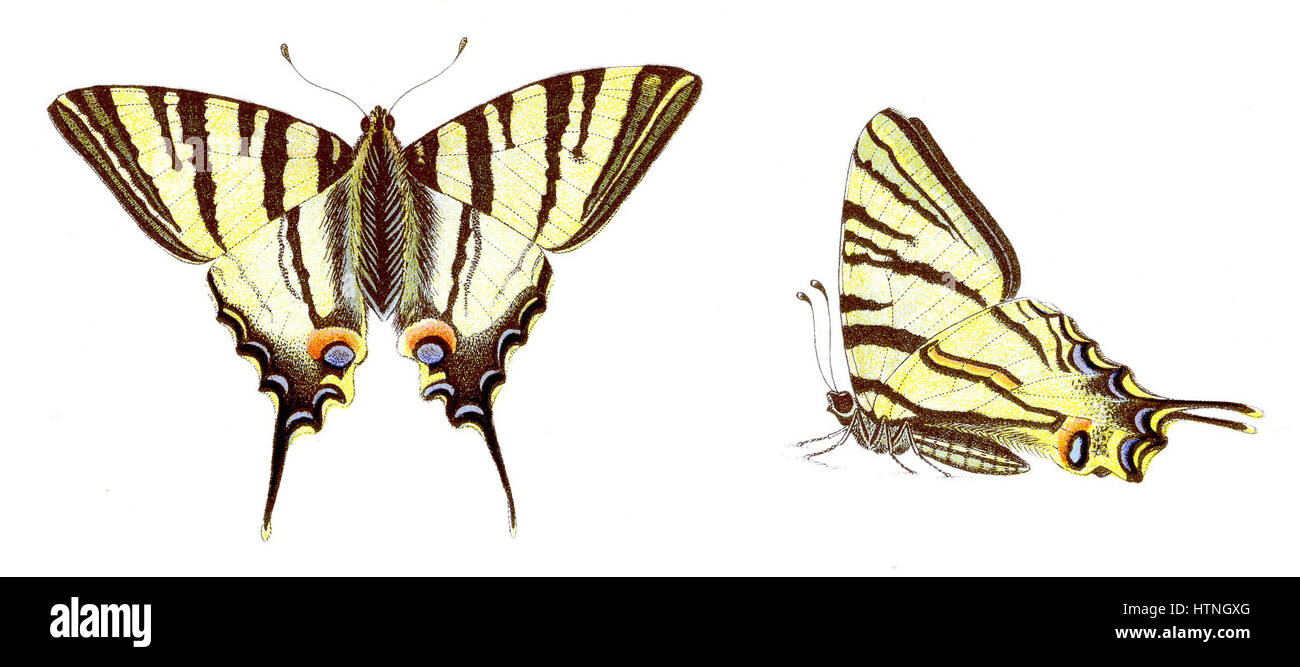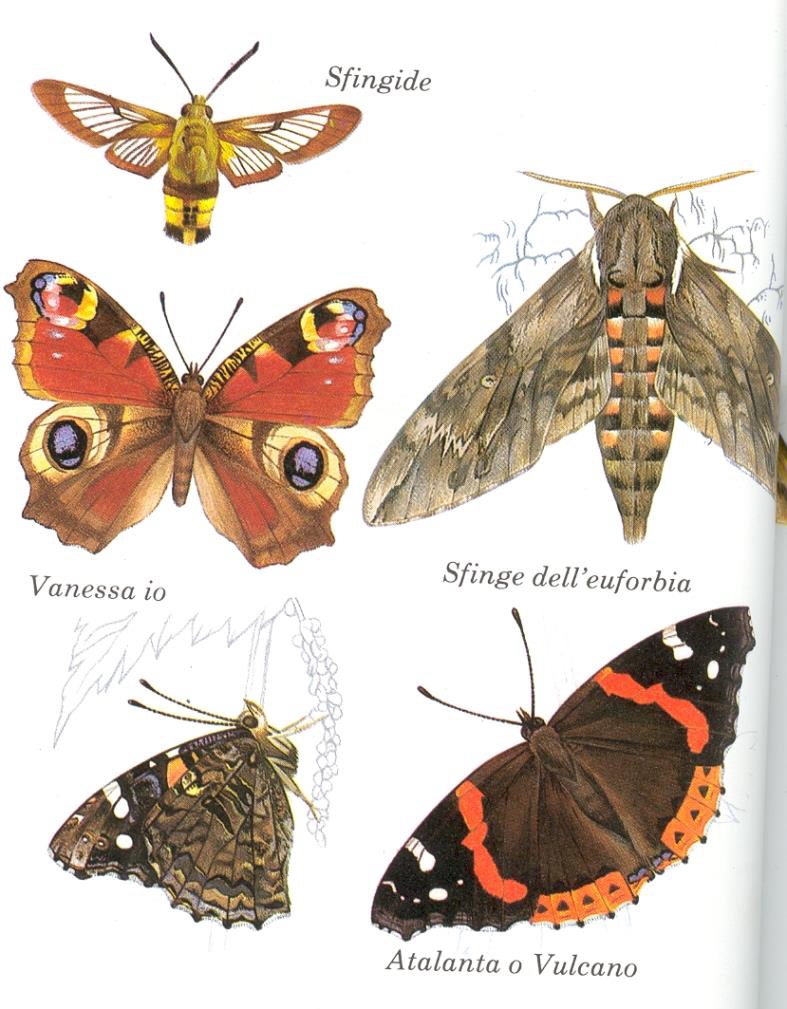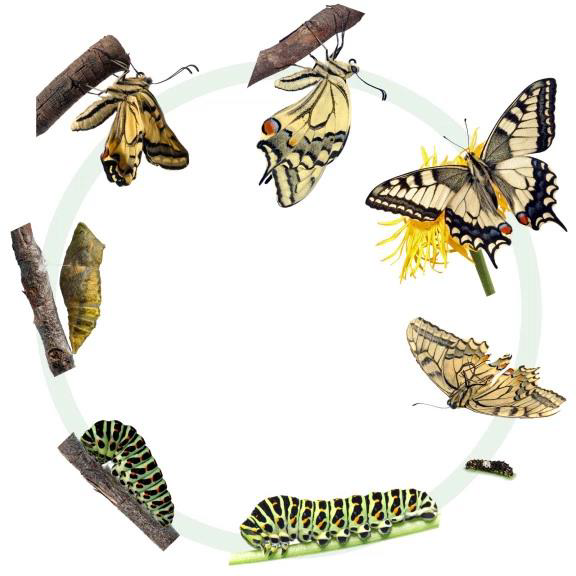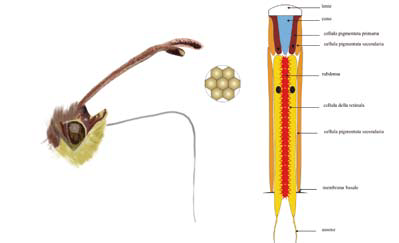The butterflies represent one of the most splendid manifestations of nature; they belong to the order of the lepidopterans, name that literally means 'scales wings'.
Lepidopterans can be divided into diurnal and nocturnal; the latter are known as 'moths'. The two groups, in addition to the different habits, differ in the shape of the antennae and the way they fold the wings when they are laid. The antennae are club-shaped in the diurnal species and comb-like or filiform in the nocturnal ones. The diurnal butterflies close the wings vertically while the moths keep them flat on the back.
The butterflies have the body divided into three distinct portions: the head, the thorax and the abdomen. The abdomen contains part of the digestive tract and the internal and external genital apparatuses. On the head are the antennae and the eyes. The antennae perceive both tactile and chemical stimuli and allow the butterfly to explore the outside world and to relate to it. In the butterflies the sight is very developed; the eyes are composed, formed by hundreds (sometimes thousands) of small lenses called ommatidia. The mouth, called spiritromba, allows to suck the nectar inside the flowers and the salts from the ground as if it were a straw.
On the thorax there are three pairs of legs and two pairs of wings. The wings are flexible, plastic and showy for the colors, the designs and the shapes. They are covered by scales arranged like the tiles of a roof; their combination produces the design and overall coloring of the wing. The colours may derive from substances present in the individual scales or from physical phenomena linked to the interaction of light with the wings. Changing the viewing angle, color perception and its intensity can change.
The biological cycle of a butterfly happens in 4 stages: egg, larva, pupa (also called chrysalis) and adult.
The egg has a thick coating of leathery consistency (called corion) that guarantees a certain protection; it has different types of shapes and colors depending on the species. The eggs are laid on the nurse plant in a number that can range from a few dozen to a few hundred.
From the egg hatches a small, cylindrical larva (more commonly known as the caterpillar). This has a head, a thorax, and an abdomen. In the thorax three pairs of legs are distinguishable. During its existence the larva encounters a series of wetsuits that are indispensable for growth. It is enclosed within the exoskeleton which must be periodically changed to allow the larva to grow.
After the last molt the caterpillar turns into chrysalis. This transformation takes place in a sheltered and protected place as the chrysalis is totally devoid of mobility and is therefore exposed to the attacks of predators. The transformation can take place underground or inside a cocoon made of silk that the caterpillar produces from special glands placed on the head.
Inside the chrysalis occurs the metamorphosis that leads to the formation of the butterfly. The latter, once formed, breaks the shell of the chrysalis and takes off.
The lepidopterans, in all the phases of their life, can have various weapons with which to defend themselves from the predators; the most common are thorns, tubercles and stinging hairs as well as toxic substances produced inside or absorbed by the feeding on the plants. In the latter case, larvae and adults inform the possible predators of their dangerousness with colors called aposematic (or warners). Caterpillars and chrysalises can then camouflage assuming the colors and shape of leaves or twigs and some species have drawings that act as a deterrent by simulating the eyes of a large animal.
Butterflies are present everywhere, from sea level to the highest peaks. In Italy the majority of the species is linked to the open environments while only some species are strictly forest. Their distribution is regulated by the presence of the nourishing plants of the caterpillars; these, in fact, can also be linked to a single vegetable essence.
The lepidopterans can move even some kilometers from the point from which they emerge from the chrysalis; their degree of mobility is also referred to as 'vagility'.
Butterflies sometimes gather in tens or hundreds of specimens on a particular plant or on the ground. In many cases such groupings have a food reason; a concentrated resource of nectar or mineral salts attracts many individuals. In other cases, butterflies gather to spend the night together, as occurs in different species of birds.
Butterflies can also be territorial in order to defend the food resources or, in the males, to increase the chances of mating with the females.
The main threat to butterflies is habitat loss due to changes in agronomic practices, reforestation and urbanization; to all this is added pollution. These insects are considered excellent bioindicators.
Butterflies have always been a symbol of grace and beauty. They have also taken on religious meanings: the butterfly that comes out of the chrysalis and takes off is the living image of the rebirth and immortality of the spirit. In Western culture the most famous myth, in this sense, is that of Psyche, elaborated in ancient Greece and also made known to the Roman and early Christian world.
The image of the butterfly-soul is present in many cultures in which the butterfly is seen as the personification of the souls of the dead who return with different appearance to visit their loved ones.



